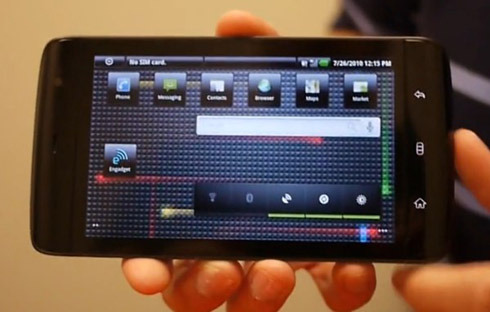How Google can save Android from the carriers


By loading their phones with crapware users must void their warranty to remove, AT&T and Verizon are delivering an inferior user experience to what iPhone owners enjoy. (Picture by Dell, from CNET.)
This is deliberate. The crapware aims to extract money for the carrier directly. The poor user experience aims to make the Android disposable.
Then, next year, frustrated consumers might take a Meego or Symbian phone, and add another year to their contracts (which can cost hundreds of dollars to break). No wonder the lines at the Apple Store are so long, and you can be served at a carrier store so quickly. People aren't dumb.
Google could not play the game Apple's way. Stores are expensive, carriers would resist given their problems with Apple, and market progress would have been much, much slower. Meego or Symbian would have taken the market share Android is now taking.
The carrier game is meant to extract the maximum in money for each bit the carriers are forced to deliver. Of course, keeping costs-per-bit high degrades the U.S. mobile market, reduces growth, and puts us further behind our international competitors, but why should the carriers care? They're just getting the maximum return for the minimum of work.
What some may deem an "anti-capitalist rant" (as though unregulated monopolies were Adam Smith's secret source) is in fact an introduction to the other half of Google's Android strategy, which is built around devices like the Dell Streak, and open standards like WiFi.
The Streak has gotten some nasty reviews, but it's not designed to be a phone or a tablet. It's designed to be an Internet client for vertical markets, in this case hospitals, where Dell Services, formerly Perot Systems, has significant market share.
As a hospital device, the Streak takes advantage of fast, secure WiFi links. Customization is to the hospital's specifications rather than to a third-party vendor. This will be done in conjunction with health IT vendors, giving them Android experience as well.
This means the Streak can take advantage of the full range of Android code. It can connect with medical records, with imaging, with the pharmacy, with colleagues in other hospitals and tests from a lab, at speeds up to 100 Mbps. It's doubly secure because, when you take it out of the hospital the connection is lost. A casual thief will find it worthless.
The Streak is a demonstration of what Android can do, which doctors, nurses, and other professionals will be able to take advantage of. Then they will leave the hospital and wonder why their phones don't work as well, leading to demand for "true" Android in the mass market.
Another important point about the Streak. It's designed for the long-haul. Buyers aren't expecting to toss it in a year, but upgrade it through software.
Durable, high value Android gear is Google's ultimate goal. Linking Android to WiFi rather than a carrier signal is a means to that end. Health is just one vertical where this will happen.